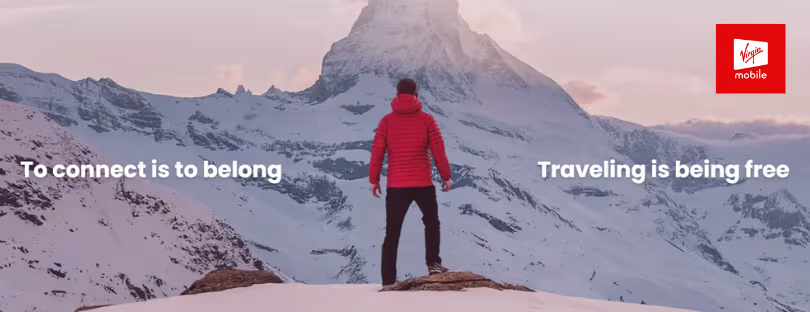
DT One Buys DENT Telecom: A Power Move in the Global eSIM Race
In a move that reshuffles pieces in the gIobal eSIM chess game, DT One has officially acquired DENT Telecom, a standout in embedded telecom and eSIM platforms. According to DT One’s own announcement, DENT’s tech will be integrated as part of its global connectivity stack, meshing with DT One’s existing API, operator relationships, and B2B distribution network.
As part of that integration, DENT is being rebranded under a fresh identity: Tunz (visit www.tunz.io). The idea is that this new “layer” will serve apps, fintechs, travel platforms and more — letting them embed mobile data functionality more seamlessly, as DT One puts it.
Why This Matters: The Strategic Logic
This isn’t just a vanity acquisition. There are some core drivers:
- Scale & Reach: DENT’s platform already allows users in 140+ countries to buy data on demand and install eSIMs in seconds. DT One, on the other hand, already manages hundreds of millions of cross-border digital transfers across 160+ countries via 600+ operators and digital partners. Stitching those together gives DT One a far wider blanket for eSIM distribution.
- Product Simplicity: DENT’s strength is in the “app + embedded eSIM” convenience — a user doesn’t have to navigate multiple carriers or platforms. DT One sees this as a plug-and-play layer: one API, one partner to integrate, rather than building connectivity from scratch for each use case.
- Distribution Lock-in: Many players in fintech, travel, IoT, and super apps are hunting for “embedded connectivity as a feature.” If DT One + Tunz becomes the go-to backend, it gives them stickiness and a barrier to entry for rivals.
- Brand & Positioning: Perhaps most subtly, “Tunz” rebrands the DENT legacy under a fresher identity — one that plays nicely with DT One’s vision of a modular connectivity “engine” rather than a standalone app.
Reading Into the Deal: Risks, Gaps & Execution Challenges
As optimistic as the narrative sounds, there are some thorns to watch:
- Integration Complexity: Merging DENT’s stack, operations, and tech with DT One’s existing infrastructure is nontrivial. Differences in architecture, APIs, security models, or regional regulatory compliance could slow integration.
- Brand Transition: Rebranding always carries friction. Some of DENT’s existing users, resellers, or partners may resist the identity shift, especially in markets where DENT had brand recognition.
- Competition & Differentiation: Other players are also racing to be the “connectivity layer” — including IoT/eSIM orchestration providers (like 1NCE, Arm Pelion, Kigen, etc.). To stay compelling, DT One + Tunz must innovate continuously or risk being commoditized.
- Regulatory Hurdles: Embedded telecom touches on licensing, spectrum usage, eSIM certification, operator agreements, and local telecom regulations. In some countries, regulatory barriers for eSIM activation are still evolving.
How This Stacks Against Other Players
Comparing DT One + Tunz to alternatives helps to see where the opportunity and pressure lie:
- IoT/eSIM Platform Providers: Firms like Arm Pelion, Kigen, and Thales are pushing eSIM provisioning and orchestration for IoT and enterprise use cases. Their scale, security credentials, and integration into device manufacturing give them strength — though their focus is often narrower than the consumer/data use case.
- Mobile Virtual Network Enablers / Aggregators: Entities such as Transatel (Nokia), MobiDATA, or G+D are carving niches in wholesale / roaming / eSIM aggregation. These players often have deeper ties with operators and regulatory acumen, but less flexibility on the front end.
- Embedded Connectivity in Consumer Apps / Platforms: Some fintech, travel, or super apps (e.g. ride-hailing, social apps) are building or acquiring connectivity modules internally. Their risk is build vs buy — and that’s exactly what DT One + Tunz wants to make easier for them.
In effect, DT One + Tunz is positioning itself at the intersection: stronger operator and network reach (from DT One) plus a consumer- and app-friendly eSIM front end (from DENT). If executed well, it can outrun platforms that are either too industrial (IoT only) or too fragmented (many APIs, patchwork coverage).
What This Means for Travel Tech, Roaming & Global Connectivity
For Alertify readers and the travel/roaming audience, this is significant:
- Fewer Integration Headaches: Travel platforms or eSIM resellers no longer need to juggle multiple vendor APIs or patch coverage gaps — they may plug into Tunz via DT One and get broad coverage by default.
- Potential Cost Efficiency: By consolidating backend routing, negotiation, and orchestration, DT One + Tunz might drive down marginal costs of serving new geographies — savings that could pass on to end users or B2B clients.
- Speed of Innovation: With internal ownership of DENT’s tech, DT One can iterate faster — launching new features (e.g. dynamic pricing, real-time provisioning, usage-based tiers) without waiting for third-party platform roadmaps.
- Market Pressure: This deal raises the bar for other eSIM middleware providers. To compete, they’ll need to prove stronger differentiation, better partnerships, or unique features (e.g. privacy-focused plans, local operator exclusivity, deep QoS guarantees).
- Risk of Consolidation: As this kind of layering becomes common, we may see more “super-aggregators” — fewer but bigger players dominating connectivity distribution. That centralization could squeeze margins or limit choice for smaller players.
Conclusion: A Smart Play — If They Can Run the Marathon
At first glance, the DT One acquisition of DENT (now to be known as Tunz) is a bold and well-thought-out move — combining raw scale, distribution, and front-end user convenience into one integrated connectivity engine. It reflects a pivot in the industry: from “who owns the SIM or network” to “who owns connectivity as a pluggable service.”
But the real challenge starts now. Execution, seamless integration, regulatory finesse, and continuous innovation will determine whether this deal becomes a transformative leg in the eSIM ecosystem—or simply another merger that could have been undone. If DT One + Tunz succeeds, they may outpace many niche middleware providers and force consolidation among rivals. But if they falter—say, with patchy coverage or poor developer experience—they counterwise open the door for more agile challengers to jump in.
For the travellers, platforms, and eSIM-first innovators we serve, this acquisition is an accelerated signal: embedded connectivity is no longer a fringe experiment — it’s becoming core infrastructure. The question going forward is which players will own that infrastructure — and whether it remains open, modular, and competitive, instead of being locked behind a few mega-platforms.









